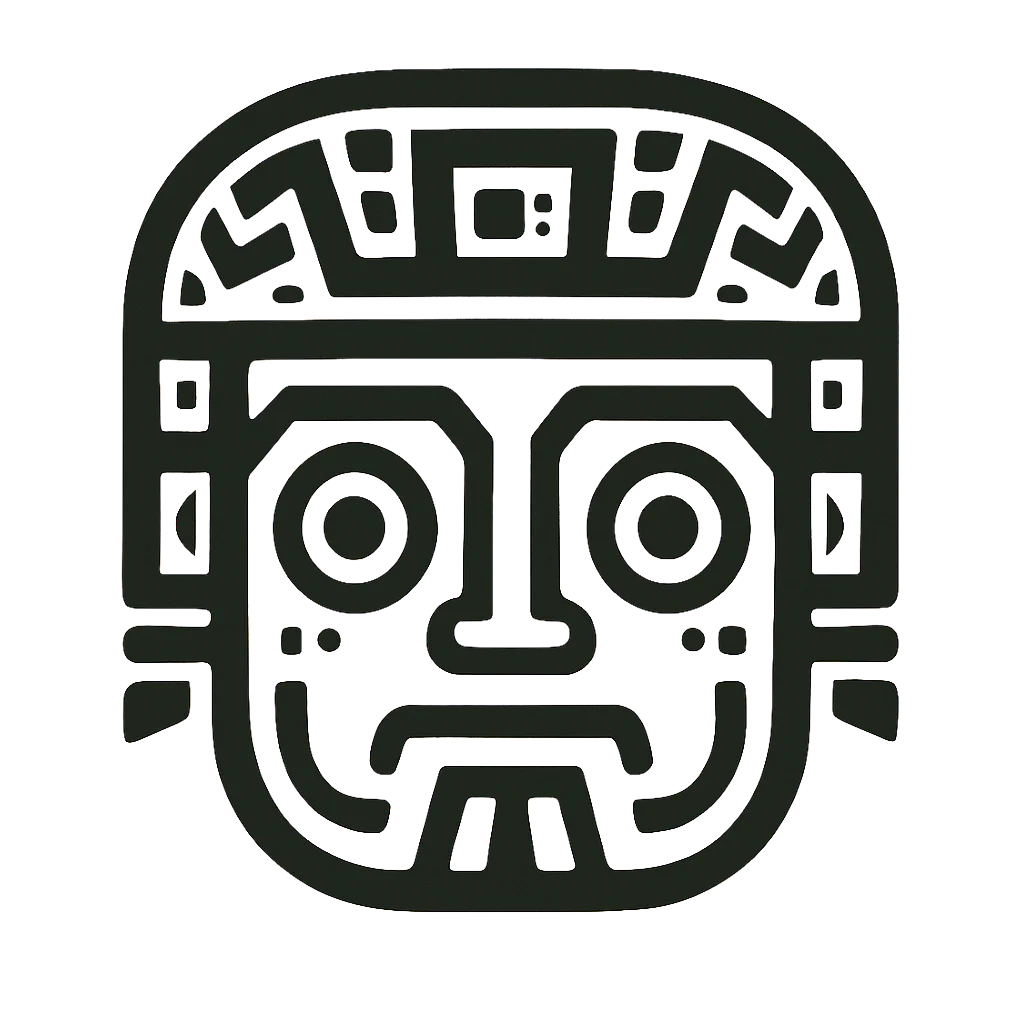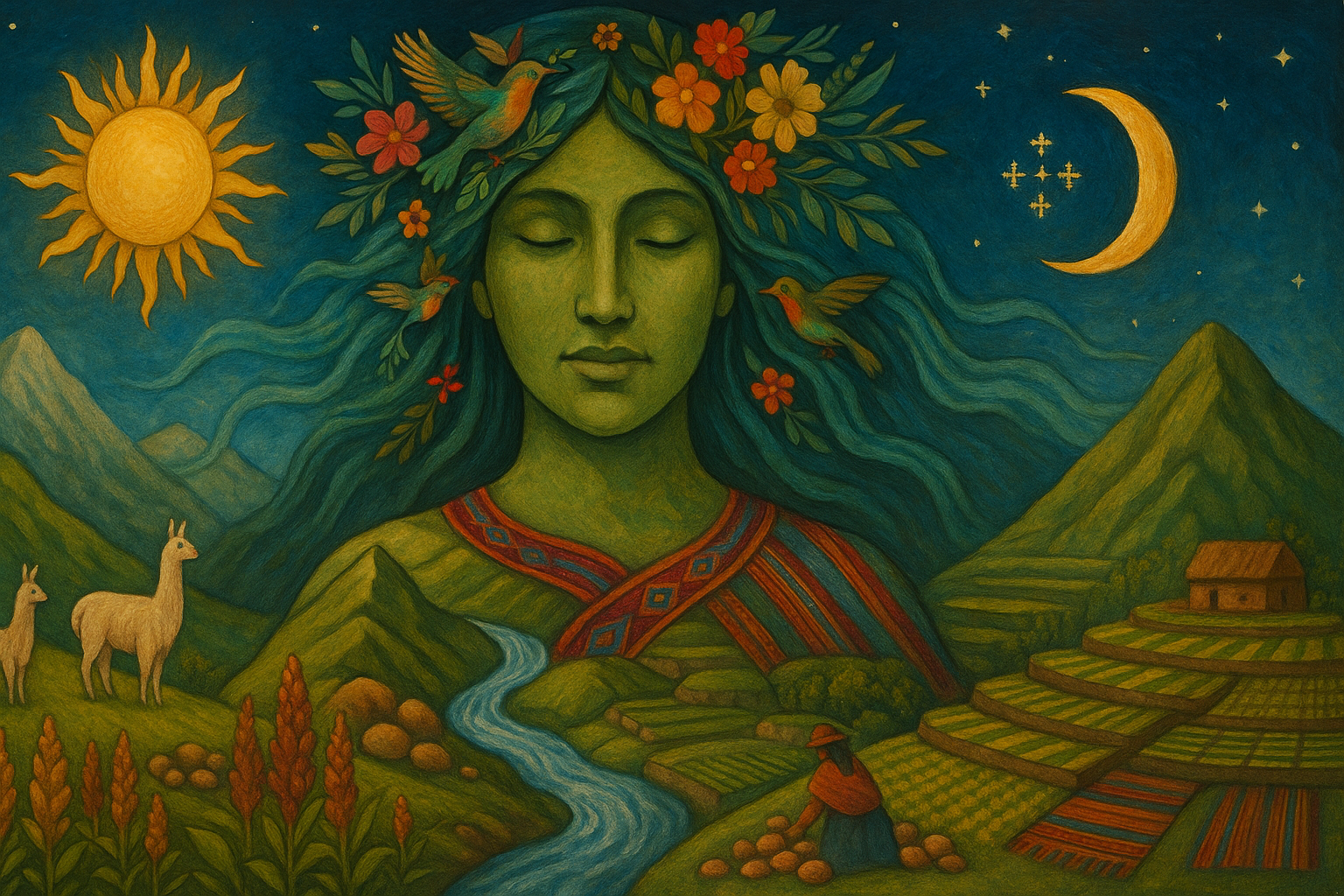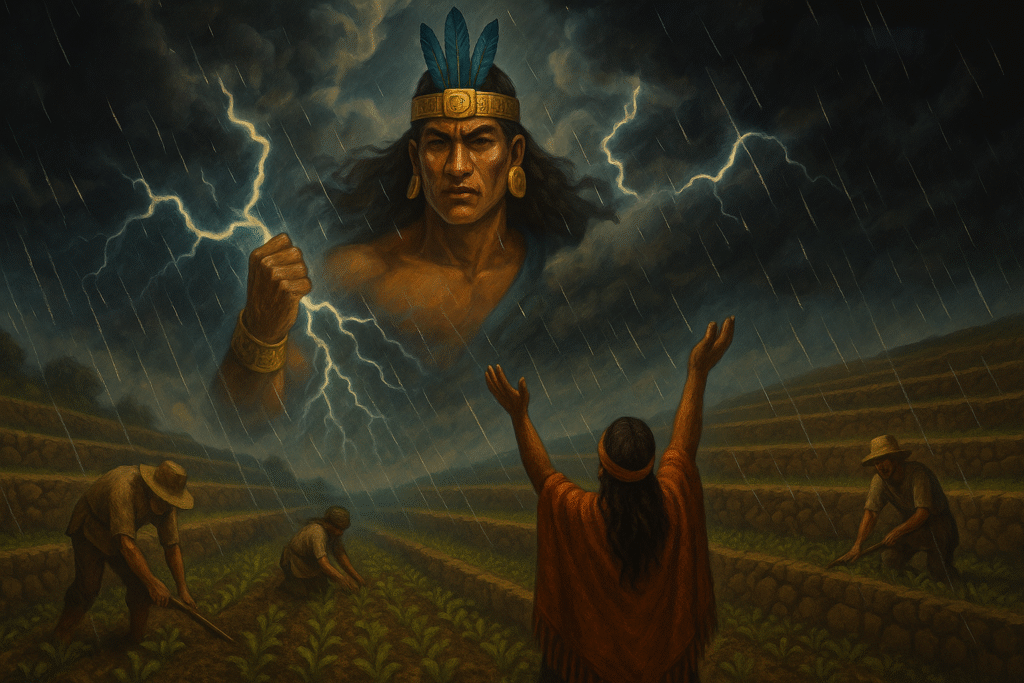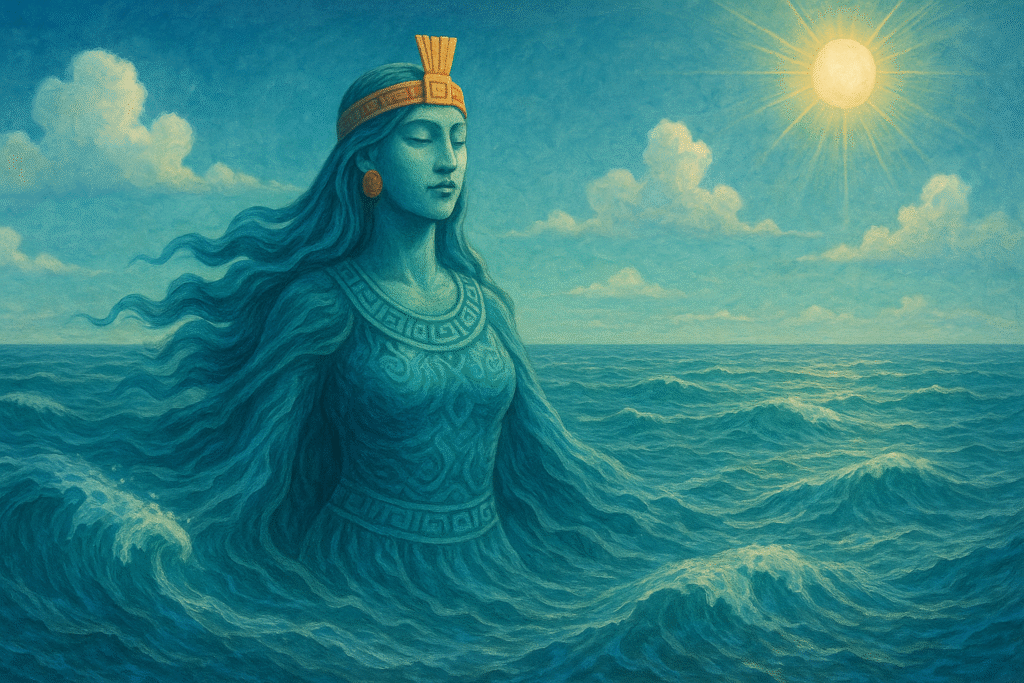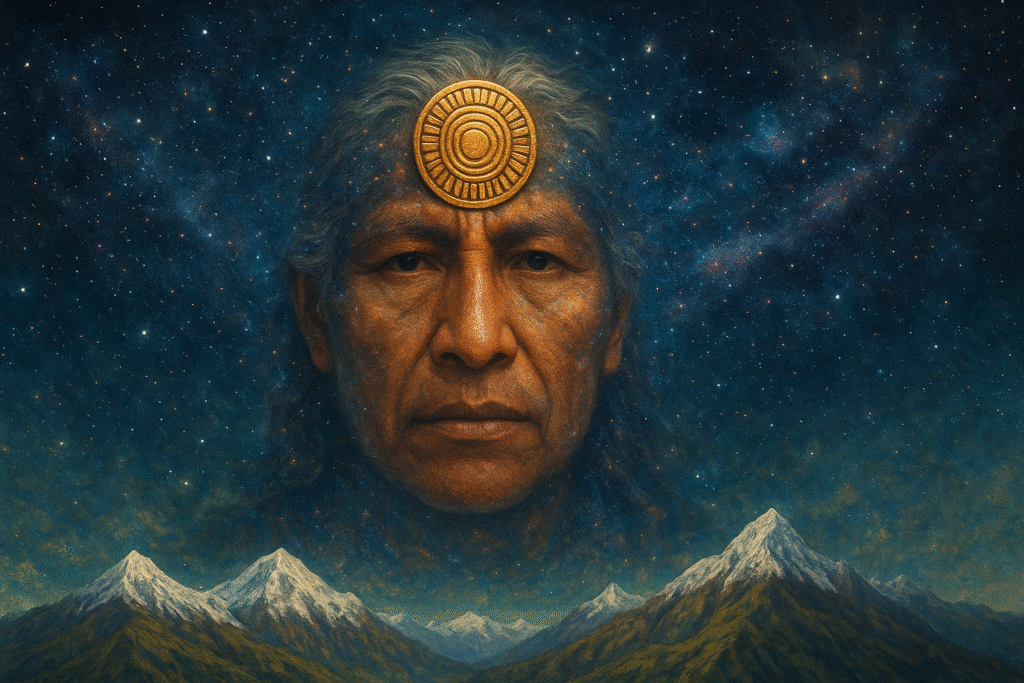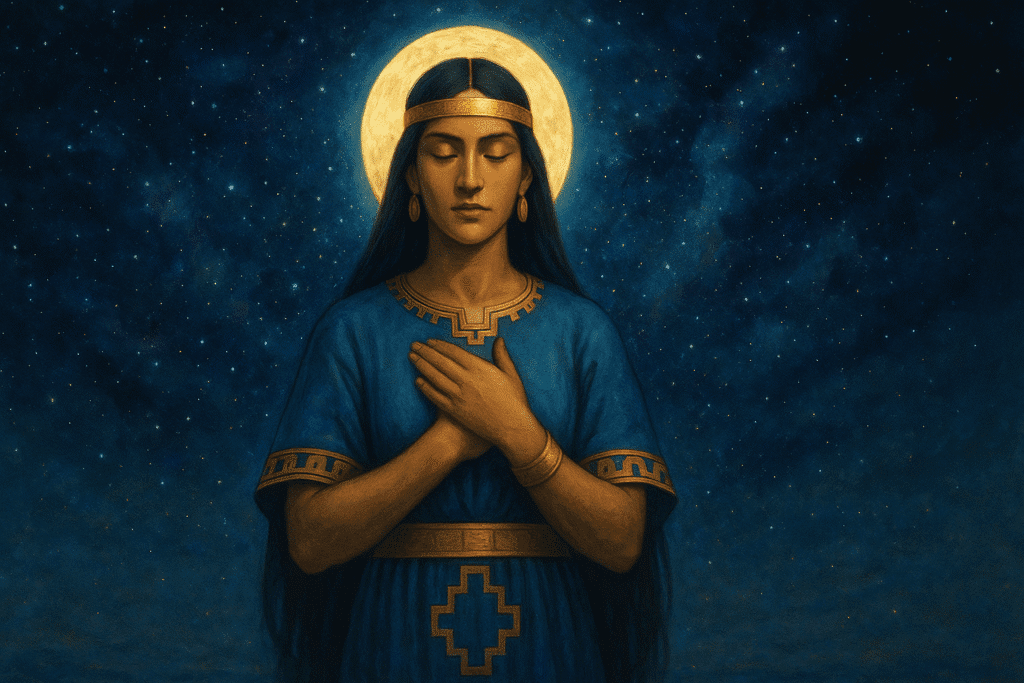The story of Pachamama is one of the oldest and most sacred in the Andean world, and remains vibrant to this day. It is not simply a case of a 'goddess of the earth', as it is often oversimplified. Pachamama encompasses the earth and the universe, the mother and the cosmos, the body and the spirit. Her cult transcends specific cultures, such as the Inca, Killke and Tiwanaku, and remains an integral part of the daily lives of millions of Andean people to this day.
Pachamama, the mother who gives birth to life, is the focus of this journey through her history, worldview, symbolism and transformation.
🌍 What is Pachamama?
The name Pachamama comes from Quechua:
- Pacha: meaning simultaneously time, space, world, cosmos.
- Mama: mother.
Thus, Pachamama does not literally translate as "Mother Earth", but rather as "Mother of the World-Time" or "Cosmic Mother. She is a complex entity that is both living, spiritual and material. She is:
- The land we walk on.
- The soil that bears fruit.
- The cyclical time that allows birth and death.
- The cosmic womb that shelters all living beings.
🌱 Mythical and pre-Inca origins
The worship of Pachamama predates the Incas by a considerable amount of time. Cultures such as the Chavín, Paracas, Nazca, Mochica and Tiwanaku peoples already worshipped female deities associated with fertility, the earth and agriculture.
- In Tiwanaku or Tiahuanaco (500–1000 AD), the goddess with open arms and prominent breasts found in ceramics and steles may represent a universal mother deity. Tiwanaku or Tiahuanaco (500–1000 d.C.), la diosa de los brazos abiertos y los senos prominentes hallada en cerámica y estelas puede representar a una deidad madre universal.
- Nazca ceramics feature numerous figures of pregnant women, protective felines, and plants sprouting from the womb, symbols of the fertile womb of the earth.
Everything indicates that Pachamama is a syncretic evolution of ancestral female deities, adapted to the Andean worldview.
🏔️ Pachamama in the Andean worldview
For the Andean peoples, everything in the universe is alive. Everything has a soul, or "camac which is a vital energy. This is why the Earth is not a resource; it is a living being and a mother who feels.
Pachamama is:
- Protector of home and territory.
- Giver of food, water, health, and life.
- She is righteous if she is offended or disrespected.
- Vessel of the dead: the body returns to it.
Our relationship with her is based on the principle of reciprocity, or 'ayni': 'You give me, I give you.' This is why the people constantly offer her gifts.
- Offerings (dispatches).
- Chicha, coca leaves, and cooked foods.
- The first bite, the first sip, the first harvest.
Why is it so important in the Andean worldview?
In the Andean worldview, human beings are not above nature, but within it, as part of a sacred whole. Life is based on reciprocity: if the earth gives you food, you must give back respect, care, and gratitude.
Pachamama is part of the balance between the three Andean worlds:
- Hanan Pacha (upper world): where the celestial gods, such as Inti (sun), dwell.
- Kay Pacha (present world): the world of humans, where we live and coexist.
- Ukhu Pacha (underworld): linked to fertility, seeds, the dead, and Pachamama in its deepest form.
In this fabric of worlds and relationships, Pachamama is the sustenance and the channel that connects the visible with the invisible.
🌄 Rituals and festivities
📆 August 1: Pachamama Day
This date marks the start of the planting season in the Andean agricultural calendar. In regions such as the Altiplano and Cusco, the most significant offering of the year is presented. A "despacho" is prepared: a ritual table including:
- Corn kernels, potatoes, quinoa.
- Candy in the shape of houses, llamas, spirals.
- Vicuña wool, coca leaves, alcohol, wine, or chicha.
- Sometimes llama fat or dried fetuses (Bolivian highlands) are included.
🌾 Other important practices:
- Pachamama Kutin (Devolución a la Pachamama): during agricultural festivals.
- Offering to the earth before building a house or opening a road.
- Tinkuy: The act of pouring a drink onto the ground before drinking it oneself as a sign of respect.
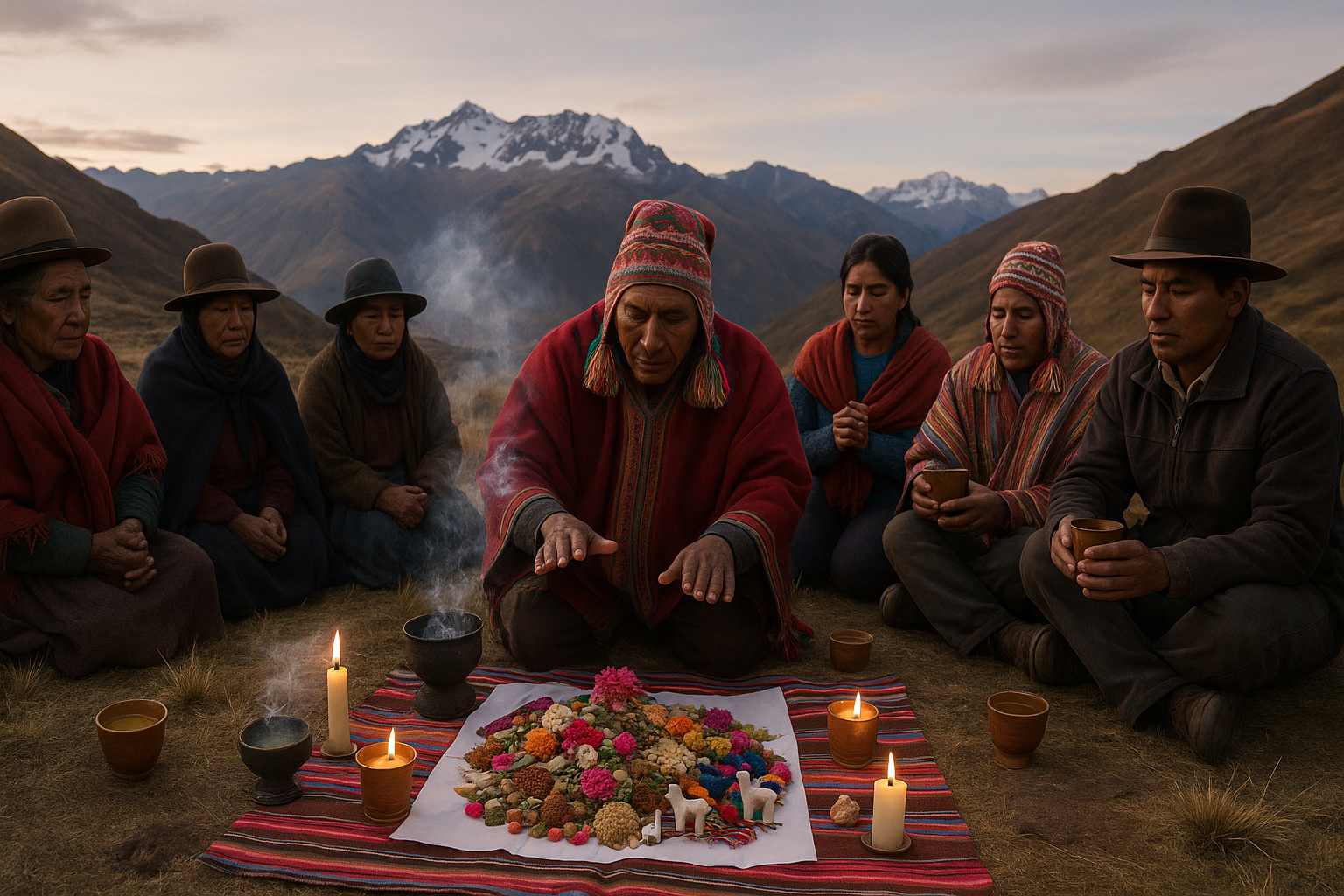
🏛️ In the days of the Tahuantinsuyo
The Incas incorporated Pachamama into their state religion, but they did not impose or replace her; rather, they integrated her alongside other entities such as:
- Inti (the Sun): considered her husband.
- Mama Quilla (the Moon): her daughter or complement.
- Mama Cocha (the sea), Apus (mountains): their brothers or protectors.
The cult of Pachamama was particularly significant in rural areas. Peasant Incas turned to her for fertility, health, rain and good harvests. Chroniclers such as Guamán Poma de Ayala and Cieza de León recorded many agricultural festivals centred on this deity.
🌪️ Syncretism and resistance
With the arrival of the Spanish, attempts were made to eradicate the cult of Pachamama, considering it idolatry. However, it did not disappear. Rather, it became syncretized:
- She began to be confused or identified with the Virgin Mary.
- The rites were disguised as Catholic festivities.
- Many Andean saints inherited protective functions that were previously performed by Pachamama.
Currently, in rural communities in Perú, Bolivia, Ecuador, Chile and Argentina, Pachamama is still alive and active. She is part of a spiritual system. intergenerational and respectful, deeply ecological and community-oriented.
🪢 How can visitors connect with Pachamama?
If you visit the Andes and want to do so respectfully, here are some simple ways to honor their presence:
- Walk respectfully along the Andean trails. Do not litter or damage the environment.
- Give thanks silently or with a small offering when you reach a mountain, river, or sacred site.
- If you participate in a guided ritual, do so with an open mind and a present heart.
- Remember that Mother Earth does not need valuable things: she needs your gratitude and your care.
Pachamama is not just a myth from the past; it is a living principle that can be found in the mountains, in cultivated land, and in every act of respect for the natural world. Understanding it is a way of reconnecting with what is truly important.
